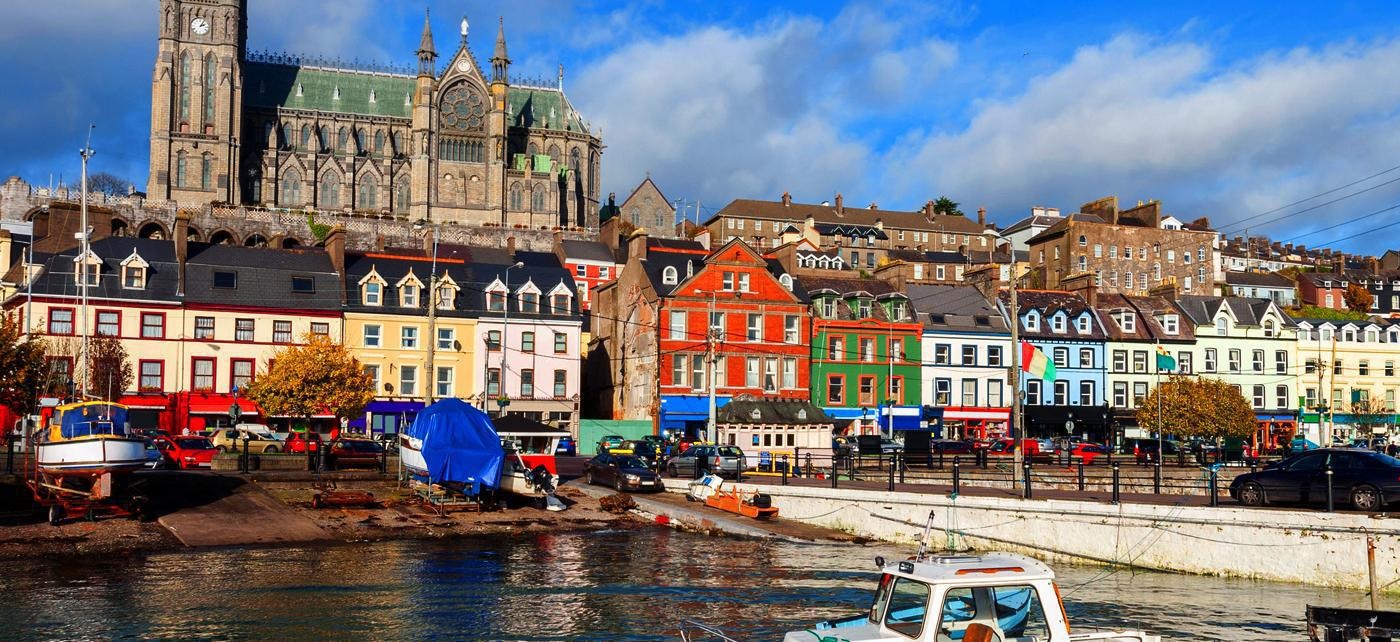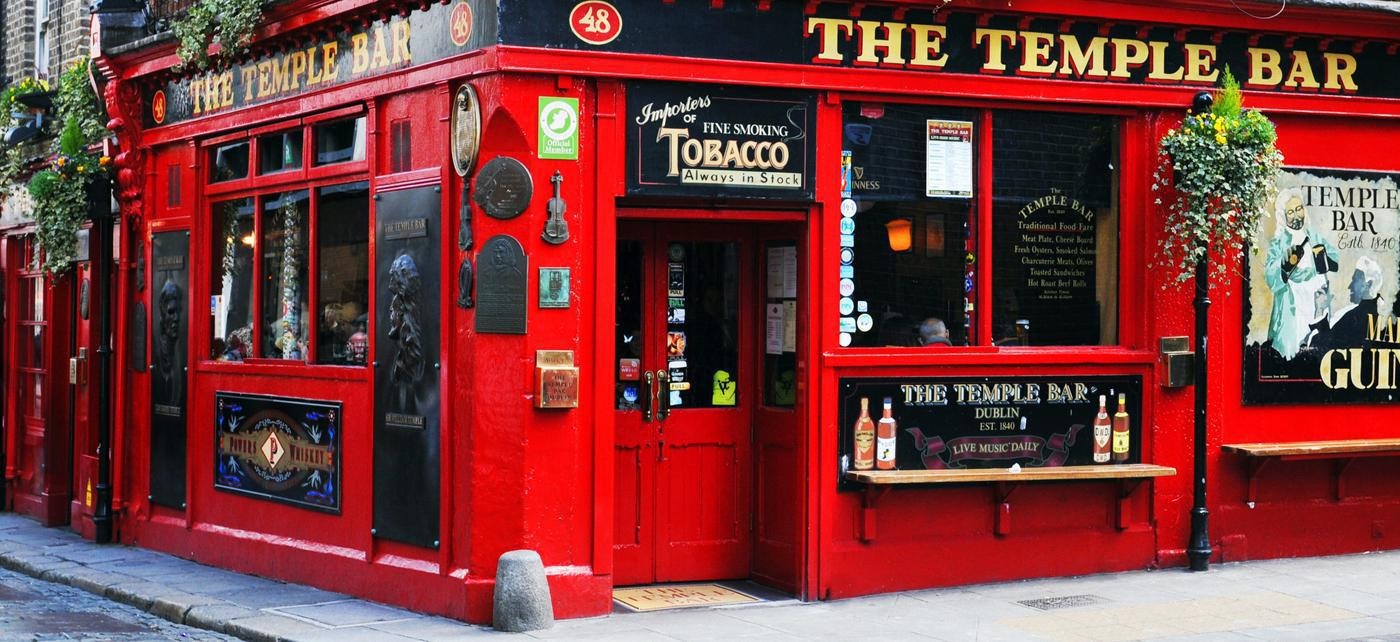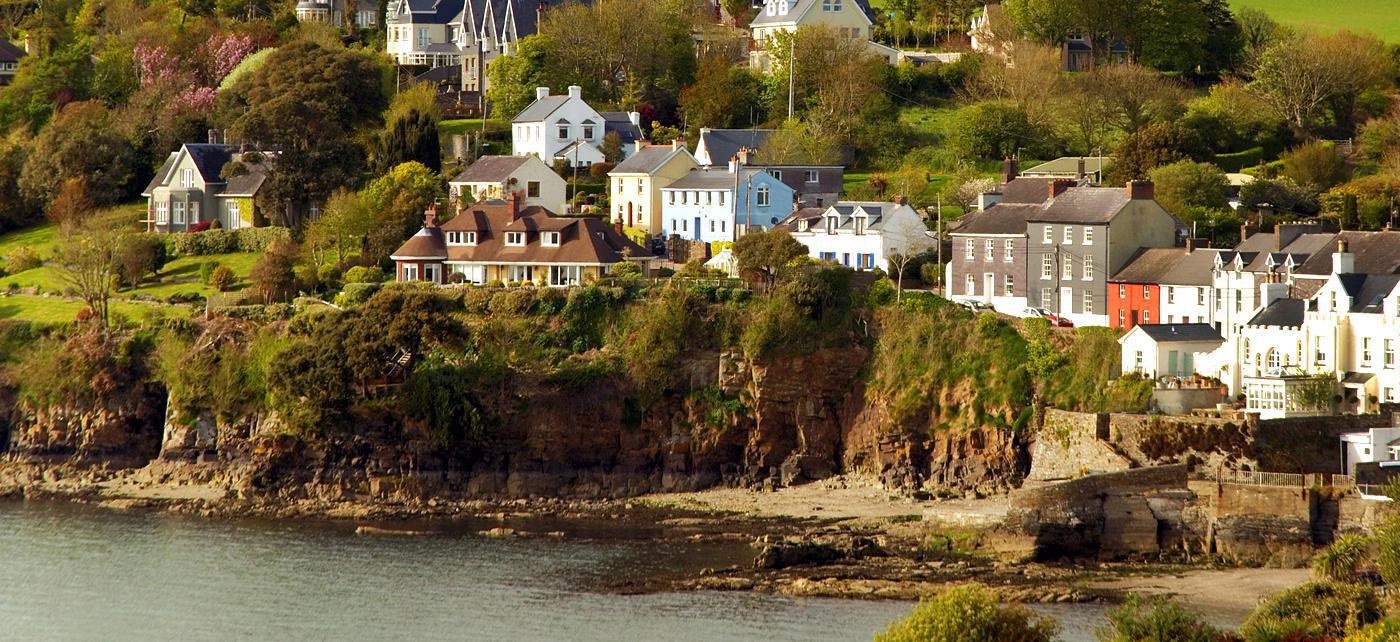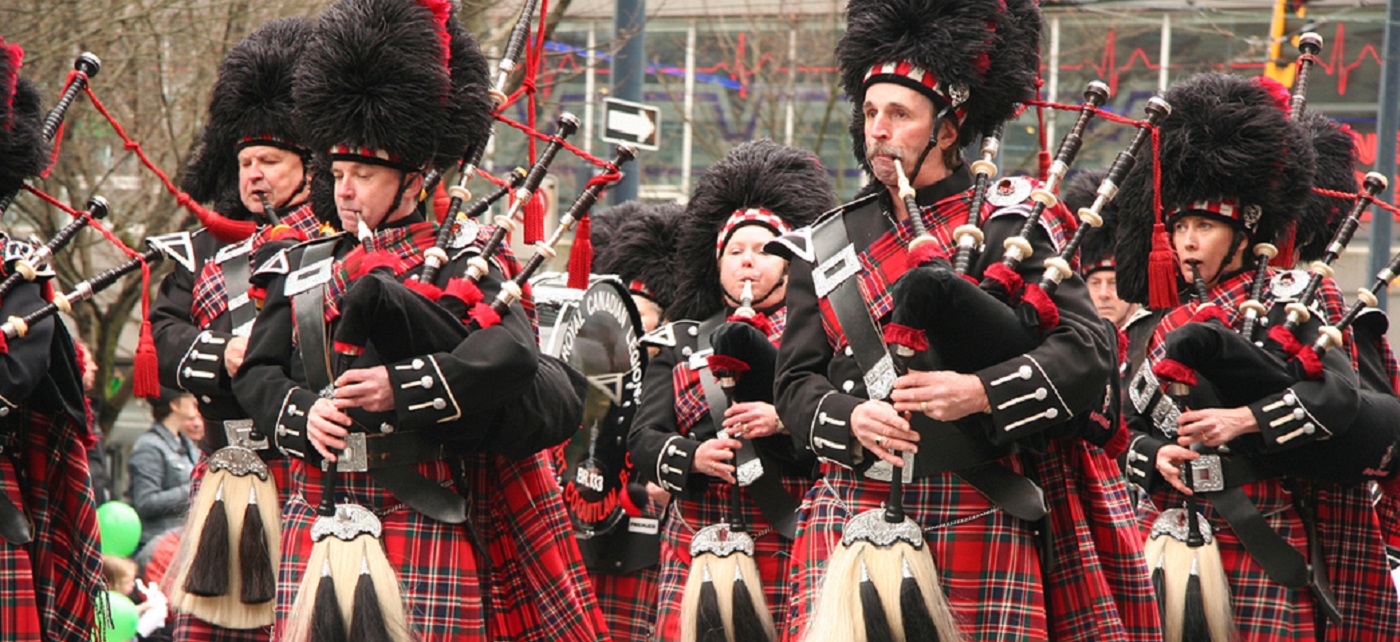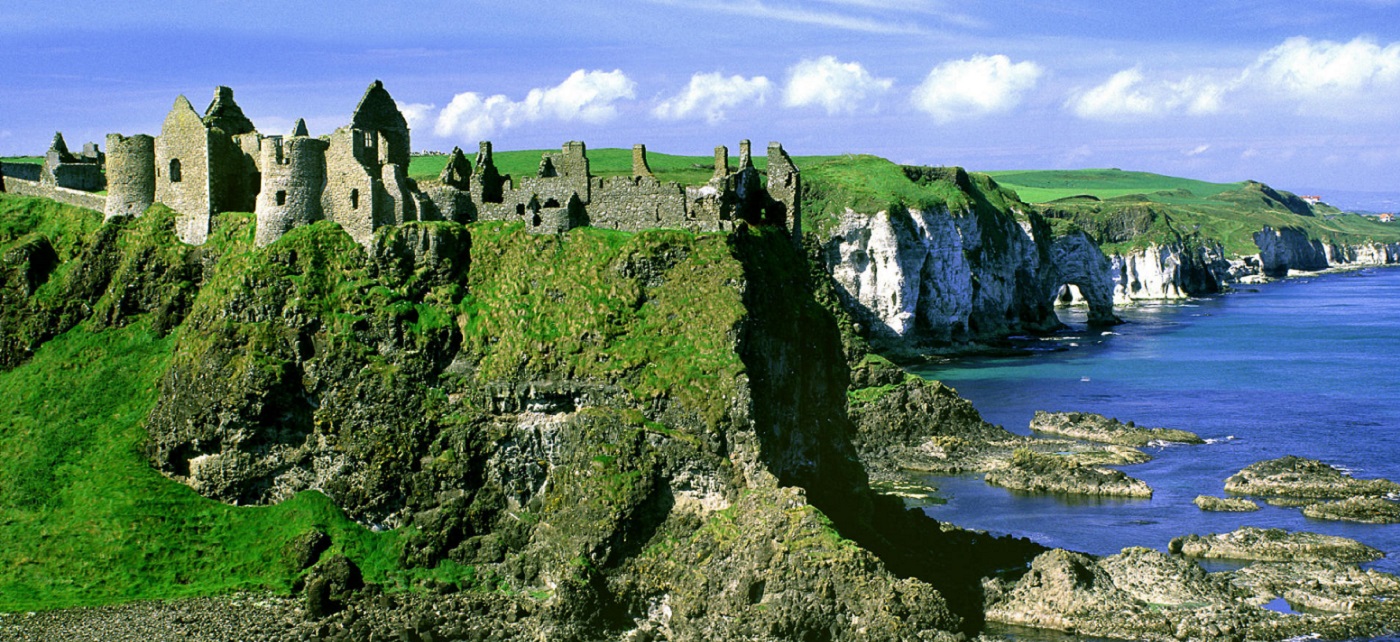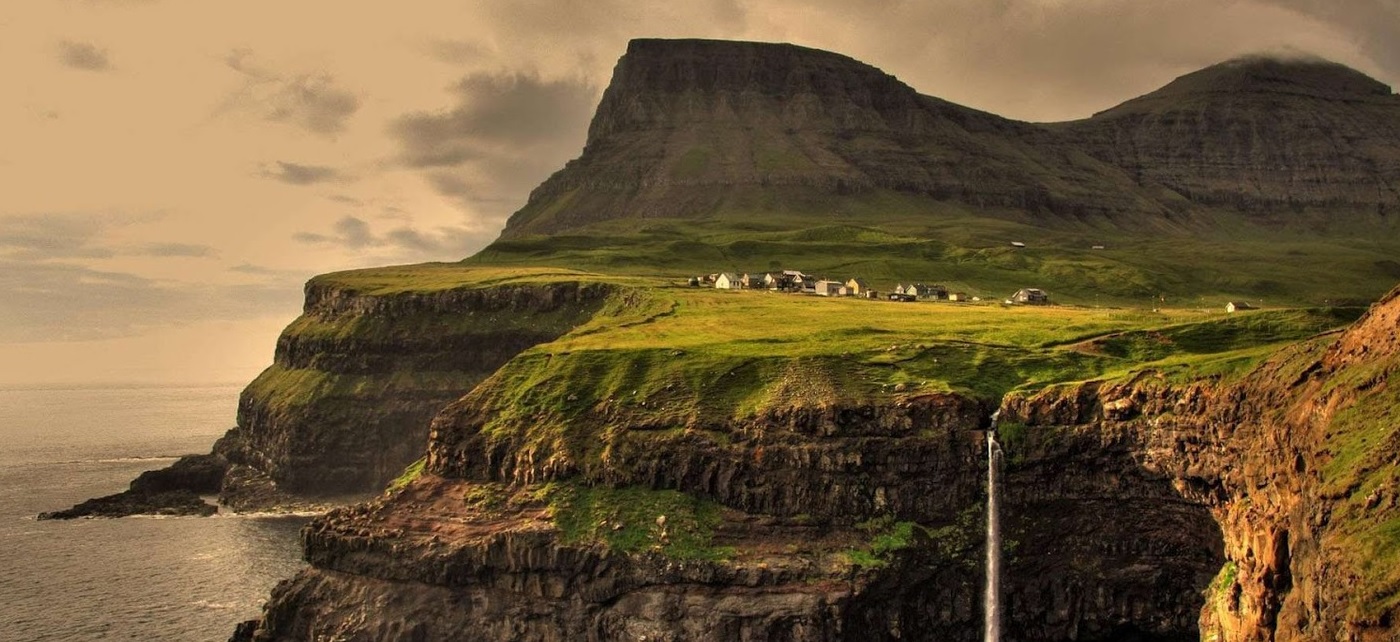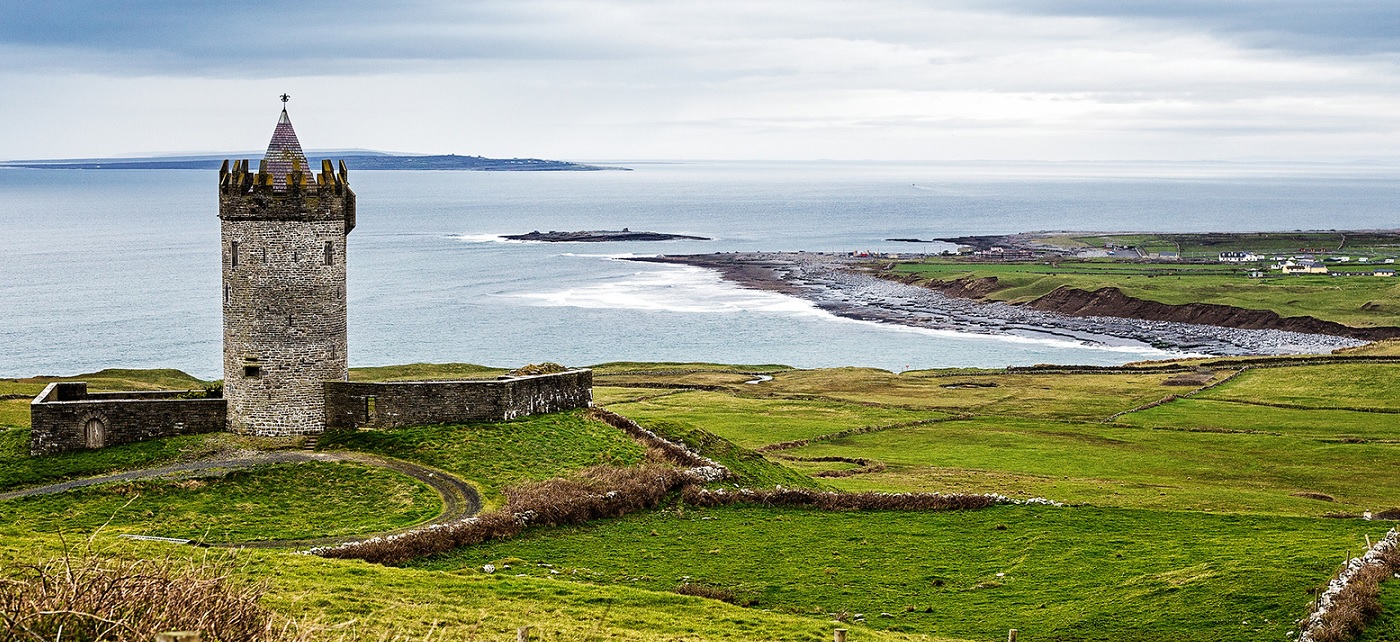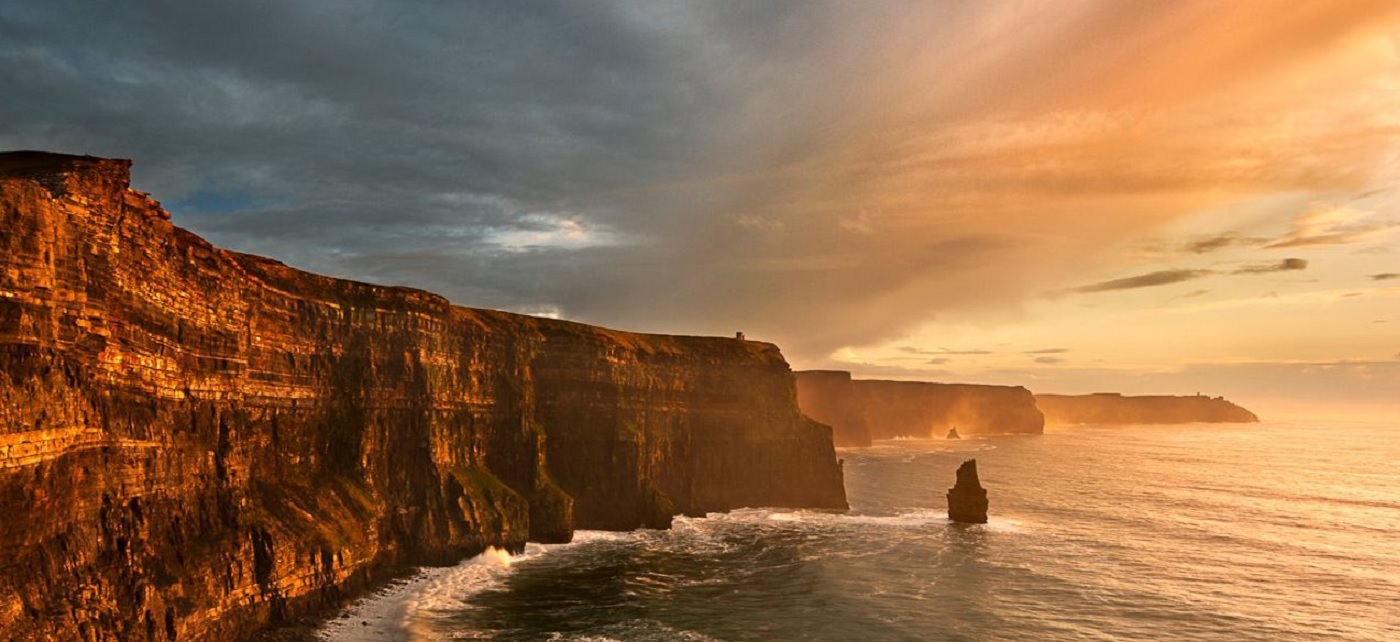Ireland is an island to the northwest of continental Europe. It is the third-largest island in Europe and the twentieth-largest island in the world. To its east is the larger island of Great Britain, from which it is separated by the Irish Sea. Both islands are surrounded by over six-thousand smaller islands and islets with which they, together with the Channel Islands, are known collectively as the British Isles or simply Britain and Ireland. The island is divided between the Republic of Ireland, which covers just under five-sixths of the island, and Northern Ireland, a part of the United Kingdom, which covers the remainder and is located in the northeast of the island. The population of Ireland is approximately 6.2 million people. Just fewer than 4.5 million live in the Republic of Ireland and just fewer than 1.8 million live in Northern Ireland.
Relatively low-lying mountains surrounding a central plain epitomize Ireland's geography with several navigable rivers extending inland. The island has lush vegetation, a product of its mild but changeable oceanic climate, which avoids extremes in temperature. Thick woodlands covered the island until the 17th century. Today, it is the most deforested area in Europe. There are twenty-six extant mammal species native to Ireland.
Most of Ireland was covered with ice until the end of the last ice age over 9,000 years ago. Sea levels were lower and Ireland, like Great Britain, was part of continental Europe. Mesolithic Stone Age inhabitants arrived some time after 8,000 BC and agriculture followed with the Neolithic Age around 4,500 to 4,000 BC when sheep, goats, cattle and cereals were imported from the Iberian Peninsula.
At the C�ide Fields, preserved beneath a blanket of peat in present-day County Mayo, is an extensive field system, arguably the oldest in the world, dating from not long after this period. Consisting of small divisions separated by dry-stone walls, the fields were farmed for several centuries between 3,500 and 3,000 BC. Wheat and barley were the principal crops.
Despite the political partition, the island of Ireland continues to act as a single entity in a number of areas that transcend governmental agencies. The two jurisdictions share transport, telecommunications, energy and water systems. With a few notable exceptions, the island is the main organisational unit for major religious, cultural and sporting organisations. The island fields a single international team in most sports, for example, and March 17 is celebrated throughout Ireland as the traditional Irish holiday of St. Patrick's Day. One notable exception to this is Association football, although both associations continued to field international teams under the name "Ireland" until the 1950s. An all-Ireland club competition for soccer, the Setanta Cup, was created in 2005.
There are a number of languages used in Ireland. Irish is the only language to have originated from within the island. Since the later 19th century, English has become the predominant first language having been a spoken language in Ireland since the middle Ages. A large minority claim some ability to speak Irish today, although it is the first language only of a small percentage of the population. Under the constitution of the Republic of Ireland, both languages have official status with Irish being the national and first official language. In Northern Ireland English is the dominant state language, whilst Irish and Ulster Scots are recognized minority languages.
Food and cuisine in Ireland takes its influence from the crops grown and animals farmed in the island's temperate climate and from the social and political circumstances of Irish history. For example, whilst from the middle Ages until the arrival of the potato in the 16th century the dominant feature of the Irish economy was the herding of cattle, the number of cattle a person owned was equated to their social standing. Thus herders would avoid slaughtering a milk-producing cow.
